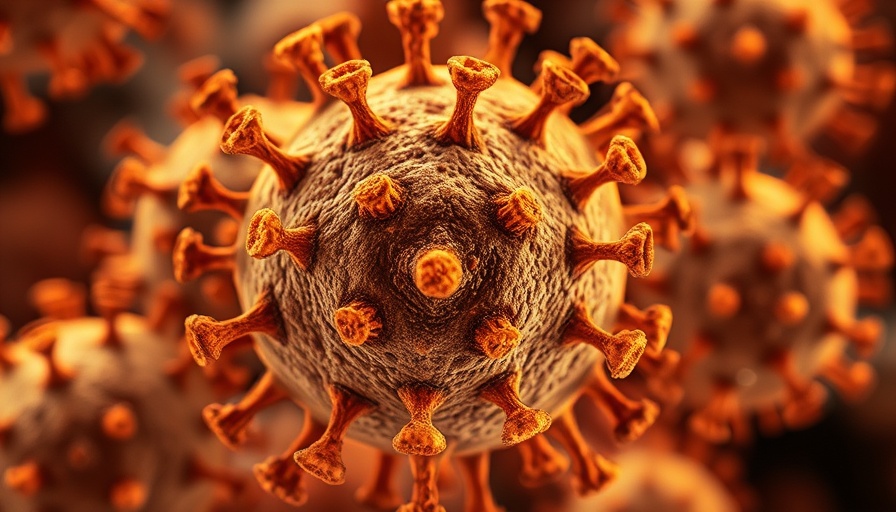
Understanding the Current Bird Flu Situation
The ongoing story of bird flu has captivated health enthusiasts and professionals alike as the highly pathogenic avian influenza (HPAI) continues to unfold. The current outbreak affecting both poultry flocks and dairy cows raises questions about its potential to evolve into a pandemic. As health journalists and community advocates, it’s crucial to stay informed and prepared, especially when tracking it involves uncertainty—one that health authorities highlight regarding the effective transmission from animals to humans.
Unpacking the Risks of H5N1 In Humans
As of May 2025, there have been 70 reported cases of H5N1 infections, with all instances occurring through animal transmission rather than human interactions. This reinforces the CDC’s assessment that the general public's risk remains low. However, it’s equally important to acknowledge that workers in close contact with infected animals face a heightened risk. The situation is reminder of the past; the 1997 incident in Hong Kong, where this very virus resulted in fatalities, illustrates how easily H5N1 can adapt and transition to human hosts without a clear warning.
What Makes This Outbreak Unique?
One of the most compelling aspects of this outbreak is its scale and impact on both animal and human populations. As Maurice Pitesky from the University of California Davis stated, “This is the largest animal disease outbreak we’ve ever had.” This poses economic ramifications globally, and the ripple effects could soon touch various facets of our lives ranging from food security to changes in animal agricultural practices.
Reporting on Undercovered Angles
Local journalists play a vital gatekeeping role by uncovering stories that might otherwise slip through the cracks during such widespread crises. This includes reporting not only on the transmission of disease but also on the emotional, economic, and health impacts the outbreak has on local communities. Public health and agriculture agencies may be overwhelmed, so grassroots reporting can fill vital gaps in storytelling that are critical to the public’s understanding.
The Importance of Community Awareness
For health fanatics and the community at large, staying engaged with the evolving bird flu narrative is essential. It allows for collective awareness of how to best safeguard ourselves from potential transmission scenarios. Vigilance in monitoring animal wellness and reporting cases are key preventative measures. Community initiatives should prioritize educating members about safe interactions with wildlife and domestic animals during this crisis.
How Healthy Living Can Help
In an era where our health could be impacted by external outbreaks, adopting a healthy lifestyle becomes even more pertinent. Incorporating nutrition, stress management, and physical fitness into daily routines can bolster emotional well-being and immunity. A balanced diet rich in antioxidant foods, regular exercise, and practices like yoga and meditation can enhance mental clarity and overall health—key benefits during uncertain times.
Final Thoughts: Stay Informed and Take Action
The unfolding bird flu outbreak is a reminder of the delicate balance between animal health and human well-being. As part of this active narrative, we encourage everyone to remain well-informed and engage with community health initiatives. Moreover, integrate a holistic approach to health through mindful eating, regular exercise, and stress management techniques, which are crucial in maintaining resilience amidst these challenges.
For ongoing updates and tips on healthy living during such outbreaks, consider joining local health workshops or webinars. Our community thrives when we work together towards a balanced and healthy lifestyle.
 Add Row
Add Row  Add
Add 




Write A Comment